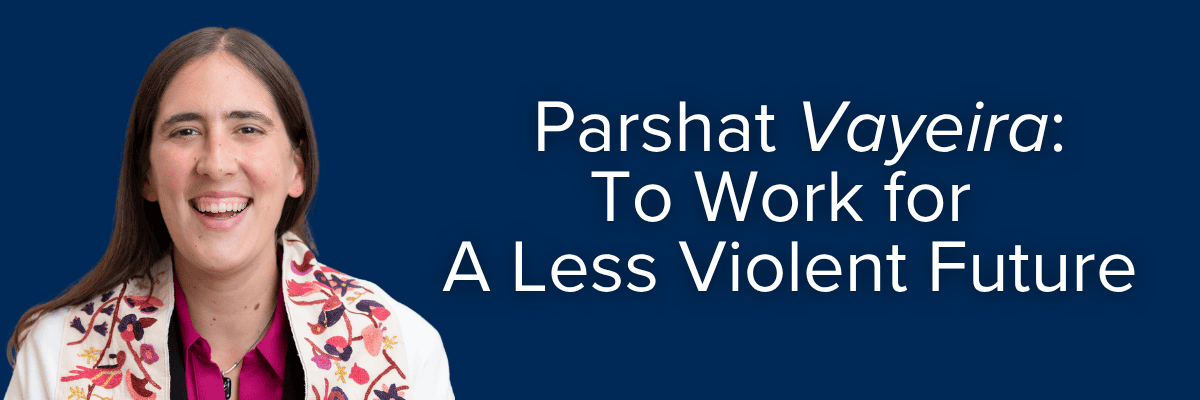One of my favorite slightly quirky electives that I took in rabbinical school was called “Family in the Bible and Ancient Israel.” In the class, we explored what archaeologists know (or knew, at the time I took the class … it seems like it’s always evolving) about family life in different societies in the Ancient Near East, and mapped that on to the stories of different families in the Bible.
For example, what do we know about adoption in different societies in the Ancient Near East, and how can that inform our understanding of Bible stories that feature families that grow, in part, through adoption? What do we know about how marriage worked (when people got married, to whom, what polygamy signified, etc), and how does that deepen our understanding of people in the Torah in various kinds of marriages? What did childhood mean, and what did adulthood mean, and what did gender mean?
And … what did child sacrifice mean? This is one of the most troubling, and persistent, questions for anyone who is reading the Tanakh (Bible) with a focus on families (or a focus on children), because child sacrifice seems to come up a lot. There is the famous Akeda, or binding of Isaac story (which is part of this week’s Torah portion), in which Abraham almost sacrifices his son Isaac, and there is the deeply troubling story of Jepthah’s daughter in Judges 11, and then there are lots of laws about child sacrifice – and if you read closely, some of these seem to outlaw child sacrifice, and some of them do not. What should we make of this?
The theory we learned in our class is that, in broad terms, the Tanakh as we have it today may be the product of a society that was evolving its own relationship with child sacrifice. We have some texts in the Tanakh that make it very clear that for some of the Bible’s authors and readers, child sacrifice was totally morally unacceptable. But we also have verses (that we think might be older) that give us a glimpse into a world where some people thought that sacrificing their children (particularly, their firstborn children) was a way to show gratitude to God. To say that this is wildly troubling would be an understatement.
What should we make of this, not just academically, but religiously? What does it mean to have a sacred text that contains remnants of both impulses, both attitudes towards an unimaginable and awful form of harm?
For me, these laws and stories (both the anti-child-sacrifice polemics, and the troubling verses in other parts of the Tanakh that seem more morally ambiguous) are a reminder that often, ending a subtype of violence that is widespread and to some extent socially acceptable in your society can be a long and protracted struggle, taking the effort of many people, over a long period of time. When I read the Akedah, the story of the binding and near-sacrifice of Isaac, which makes the idea of child sacrifice seem horrifying (as it should) and emphasizes, at the end of the day, that God doesn’t want people to sacrifice children, one of the things I think about is the history of anti-Black lynchings in America. I think about how part of the work of the NAACP in the early 20th century was to argue that American citizens needed to find lynchings horrifying … because not everyone did. I think about the more than century of work that finally culminated in the Emmett Till Antilynching Act of 2022. And I think about the work that we still have left to do – on this, and so many other fronts – to make our country and our world a place where people can be themselves, without fear of violence.
Ultimately, the Tanakh’s presentation of a range of attitudes on child sacrifice (and most importantly, a gradual shift over time, from possible acceptance of the practice to a deep and resounding rejection) feels hopeful because it’s a reminder that people and societies can decide to change for the better, for the more just, for the more humane. And it’s an invitation to us, where we see violence and injustice, to not give up, and join the work for a different future.
Shabbat Shalom,
Rabbi Alexandra Stein
P.S. Are you interested in learning more about some of the topics in this d’var? To learn more about children and family in the Bible, I’d recommend Children in the Ancient Near Eastern Household by Dr. Kristine Garroway, as well as Dr. Garroway’s other books (Children in the Ancient Near Eastern Household was published in 2014 – Dr. Garroway’s newest book came out this year). Books that cover some of the NAACP’s early cultural work include Imprisoned in a Luminous Glare: Photography and the African American Freedom Struggle by Leigh Raiford and Art for Equality: The NAACP’s Cultural Campaign for Civil Rights by Jenny Woodley.


